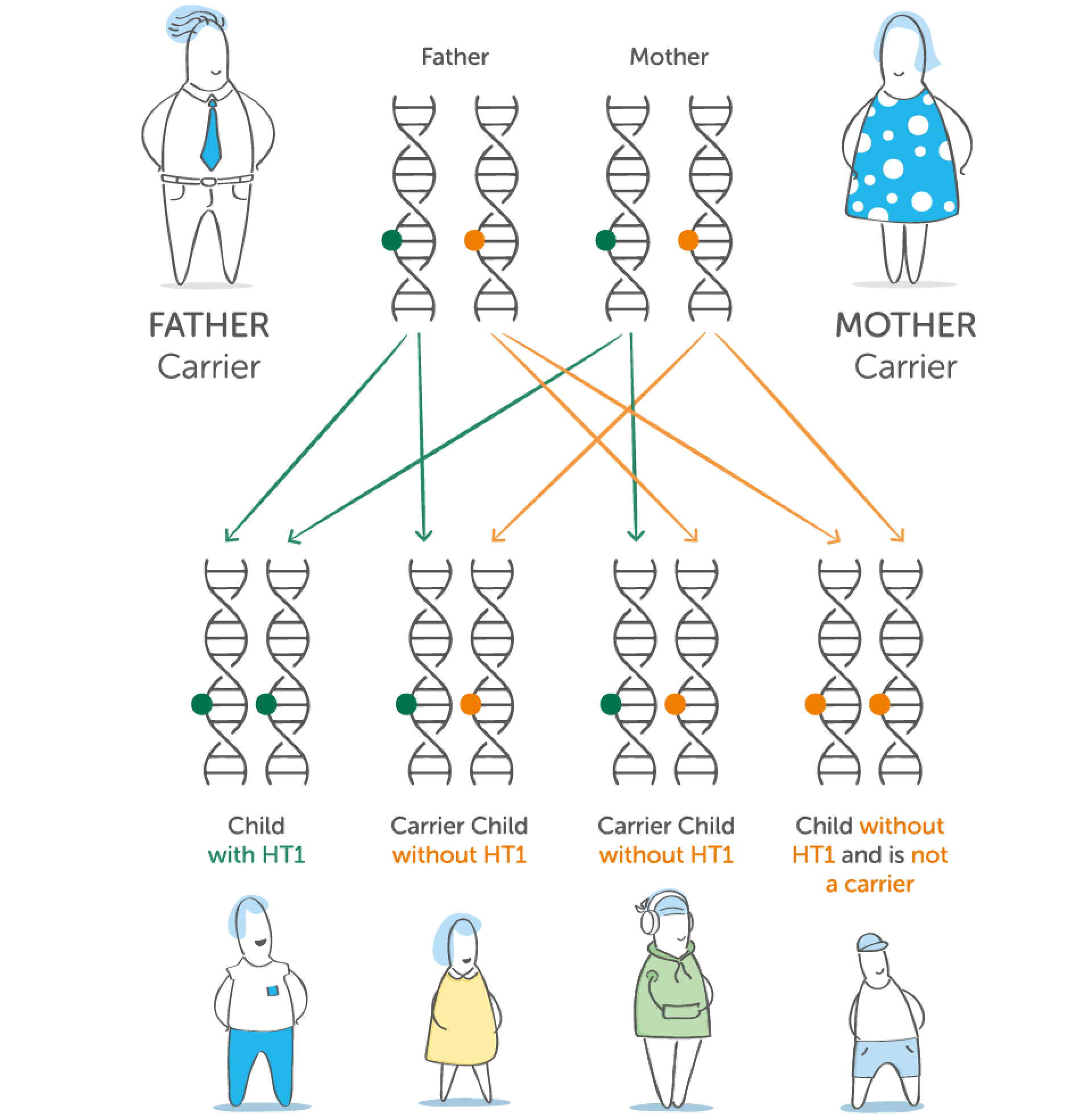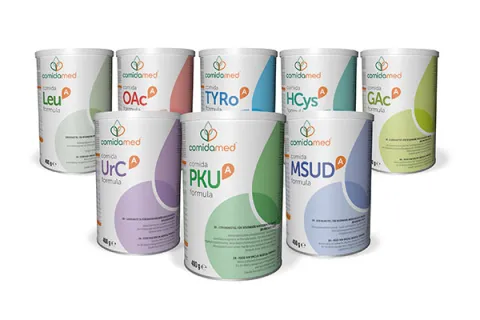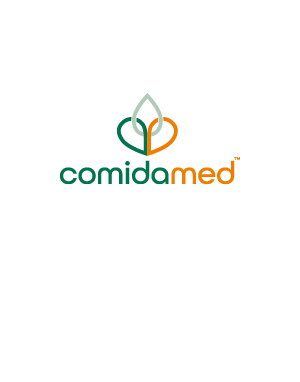An introduction to Tyrosinaemia Type 1 (HT1)
This easy to read page guides you through the diagnosis and management of HT1.
This is an introduction to Tyrosinaemia Type 1 (HT1) following the diagnosis of your child with this condition.
Consult your metabolic team for diagnosis and treatment for HT1.
This page is not designed to replace any advice given by the metabolic team at the hospital.
If you are unclear about anything written here, please ask your dietitian for further information.
What is HT1?
Tyrosinaemia Type 1 or HT1 for short (sounds like Ty-ro-sin-nee-mia).
- Children with HT1 have a defect in the process which breaks down part of a protein called Tyrosine.
- If left untreated, products in the blood build up to toxic levels which can lead to organ failure.
- This can be avoided by following a special diet alongside drug treatment.
- With management, people with HT1 can attend university, build successful careers and enjoy a happy family life the same as everyone else.
Diagnosis of HT1
This blood test (heel prick test) is carried out by a healthcare professional after birth.
Once diagnosed the child will be referred to a specialist metabolic centre to ensure they receive the care they need.
Why does my child have HT1?
HT1 is an inherited condition
It’s nobody’s fault and there is nothing you could have done to prevent it.
As a parent of a child with HT1, you have one HT1 gene and one normal gene. This is known as being a carrier.
Your child has inherited 2 HT1 genes, one from the mother and one from the father.
There are a small number of people who are carriers of the HT1 gene
People who are carriers for HT1 do not have HT1 themselves and the faulty gene does not cause a problem to them.
When 2 people who are carriers of the HT1 gene conceive a child, there is a 1 in 4 chance of that child having HT1.

The science bit... Protein explained
Protein is a nutrient needed by the body.
It helps to build, repair and maintain body cells and tissues, like your skin, muscles, organs, blood and even bones.
When protein is eaten, it is broken down in the body (during digestion) into smaller pieces (like building blocks).
These smaller pieces are called amino acids.
Protein is made up of many building blocks called amino acids
There are 20 amino acids (building blocks) that make up protein.
Some of these are ESSENTIAL and cannot be made in the body - so they must come from the food we eat.
Tyrosine and Phenylalanine (Phe) are two of these 20 amino acids.
It is these particular amino acids that a person with HT1 cannot process correctly.
What normally happens
The conversion of protein into amino acids:
Protein
Enzyme
Amino acids (Building Blocks)
Enzymes are like chemical scissors needed for the breakdown of protein into amino acids.
The body uses these amino acids for growing, building up muscle and helping the body stay healthy.
Why can someone with HT1 not process Phe & Tyrosine correctly?
A person without HT1
Phe
Enzymes
Tyrosine
Enzymes
Other substances
Normally, the liver produces a number of enzymes which break down Tyrosine into other substances that have important functions in the body.
A person with HT1
Tyrosine
Faulty/No Enzyme
Too much SA
In a person with HT1, the Tyrosine can not be broken down as it should be. The enzyme fumarylacetoacetate hydrolase (FAH) is not made by the liver or does not work properly.
This means that Tyrosine is not broken down properly and a substance called Succinylacetone (SA) builds up to toxic levels in the blood and cause the symptoms of HT1.
This is the reason a special diet low in protein (Phe and Tyrosine) needs to be followed.
Management of HT1…
There are two important parts to the management:
- Medication called Nitisinone, which prevents the accumulation of SA.
- Low protein diet.
A Regular Diet
A regular diet has too much protein for a person with HT1.
Therefore they must follow a special diet.
HT1 is managed by following a strict low protein diet
- Tyrosine and Phe are found in all protein containing foods, e.g. meat, fish, eggs, cheese, quorn, nuts, soya, pulses and in foods such as bread, biscuits and chocolate.
- In order to manage HT1, all protein foods must be restricted and a low protein diet must be followed.
- All amino acids have a role or function in the body. Tyrosine and Phe help us with our growth, development and tissue repair.
- It is important that someone with HT1 gets some Tyrosine and Phe, but not so much that it becomes harmful.
Traffic Light System
The low protein diet that a person with HT1 must follow is best described by using the traffic light system.
Red: Stop!
- Too high in protein / Tyrosine and Phe
- Do not eat these foods.
Amber: Go Cautiously!
- Contains some protein / Tyrosine and Phe
- These foods can be eaten in measured amounts (exchanges).
Green: Go!
- Very low in or free from protein / Tyrosine and Phe
- These foods can be eaten freely.
Red: Stop!
Do not eat the following foods: Meat, Fish, Cheese, Tofu, Nuts, Bread, Pasta.
These foods are all rich in protein and therefore high in Tyrosine and Phe, so they are not allowed.
Amber: Go Cautiously!
Foods like cereals, french fries, sweetcorn, peas and rice can be eaten in measured amounts known as exchanges.
Other foods like these contain small amounts of protein. These foods can be eaten in measured amounts. The measure is called an exchange.
These foods are spread out between the day’s meals to provide small amounts of essential Tyrosine and Phe. The quantities allowed will vary from person to person and from time to time in the same person.
Green: Go!
Most fruit and vegetables such as, peppers, grapes, carrots and tomatoes can be eaten freely.
There are also special manufactured foods which are low protein:
- bread
- flour
- milk alternative
- chocolate flavoured bars
- pasta
- cereal
These foods are either naturally low in Tyrosine and Phe or have been specially made to be low in protein and so are “FREE from exchanges” or do not have to be measured**.
** Please note certain low protein manufactured foods will need to be counted as part of exchanges. Please check with your dietitian.
What is a protein substitute?
Why does a person with HT1 need to take a protein substitute?
- Due to the restrictive nature of the diet, individuals are unable to get all the nutrients required by food alone. This is why a protein substitute*** is essential.
- A protein substitute is a specially made medical supplement, which can come in various formats like liquids or powders that can be made up to various consistencies.
- A protein substitute typically contains NO Tyrosine or Phe, but it contains all of the other amino acids in protein that your child needs to grow. Most protein substitutes also contain vitamins, minerals and other important nutrients to ensure your child is getting what they need.
- The protein substitute is an extremely important part of the diet for a person with HT1 and it must be taken regularly and evenly spread over the day. This helps to keep the Tyrosine and Phe levels steady throughout the day.
*** Protein substitutes designed for the dietary management of HT1 are Foods for Special Medical Purposes which must be used under medical supervision.
Protein Substitutes
Many protein substitutes are designed to fit easily into everyday life.
Your dietitian will advise you on which protein substitute is best for your child at each stage of their development
How will I feed my newborn?
Infants: breastfeeding
Step 1
Your infant will be given a Tyrosine and Phe free formula until the levels of Tyrosine fall back to normal (usually within a few days).
Step 2
Once the levels are under control Tyrosine and Phe-free formula is given before a breastfeed to restrict the amount of breast milk taken by the infant. Breast milk provides limited but essential Tyrosine and Phe for normal growth.
Breastfeeding offers many benefits for infant and mother, it is recommended you discuss this with your healthcare professional.
Infants: non-breastfeeding (Bottle feeding)
Step 1
Once your child is diagnosed, you will be seen by a dietitian. Your infant will be given a special Tyrosine and phe free formula until the levels of Tyrosine fall back to normal levels (usually within a few days). Some children may need additional medical treatment to achieve normal Tyrosine levels.
Step 2
Once the levels of Tyrosine are under control a small restricted amount of standard infant formula will be given along with the Tyrosine and Phe-free formula to provide the limited Tyrosine and Phe essential for normal growth.
Weaning
When to start weaning*
Your dietitian will advise you when to start solid foods*, but it will be at the same time as infants without HT1.
These will initially be protein-free foods or foods that have a very low protein (low Tyrosine and Phe) content.
This will help your child to develop a healthy eating pattern while eating a variety of fresh foods.
This is also the time that a second stage protein substitute may be introduced, your dietitian will advise you about this this*.
* Weaning may occur a little earlier than 6 months, depending on your infant, but it should never be started before 17 weeks.
7 to 12 months
Your child will then be encouraged to move to more textured food and finger foods. Over time, they will get more of their protein exchanges from food (e.g. potato or permitted cereal).
Less exchanges will come from breast milk or formula milk.
Protein-free foods should still be included in the diet as well.
Your dietitian will continue to advise you on your tyrosine and phe free formula/protein substitute intake.
Monitoring
Your child will have regular blood tests and monitoring to make sure their Tyrosine and Phe levels are under control.
This is very important to ensure that they do not have too little or too much Tyrosine and Phe in their diet.
Additional Phe supplementation may be required.
Your dietitian will contact you once the results are processed and discuss any changes that may be needed to your child’s diet.
As your child grows up
Children / Teenagers / Adults
Your child will continue to follow a low protein diet as they grow up into adulthood.
You, your child and dietitian will help choose the protein substitute that best suits them.
Download to share offline
A family friendly version of this information is available as a colourful PDF, which you can download and print.
Browse other topics
Discover more from the comidamed world:



